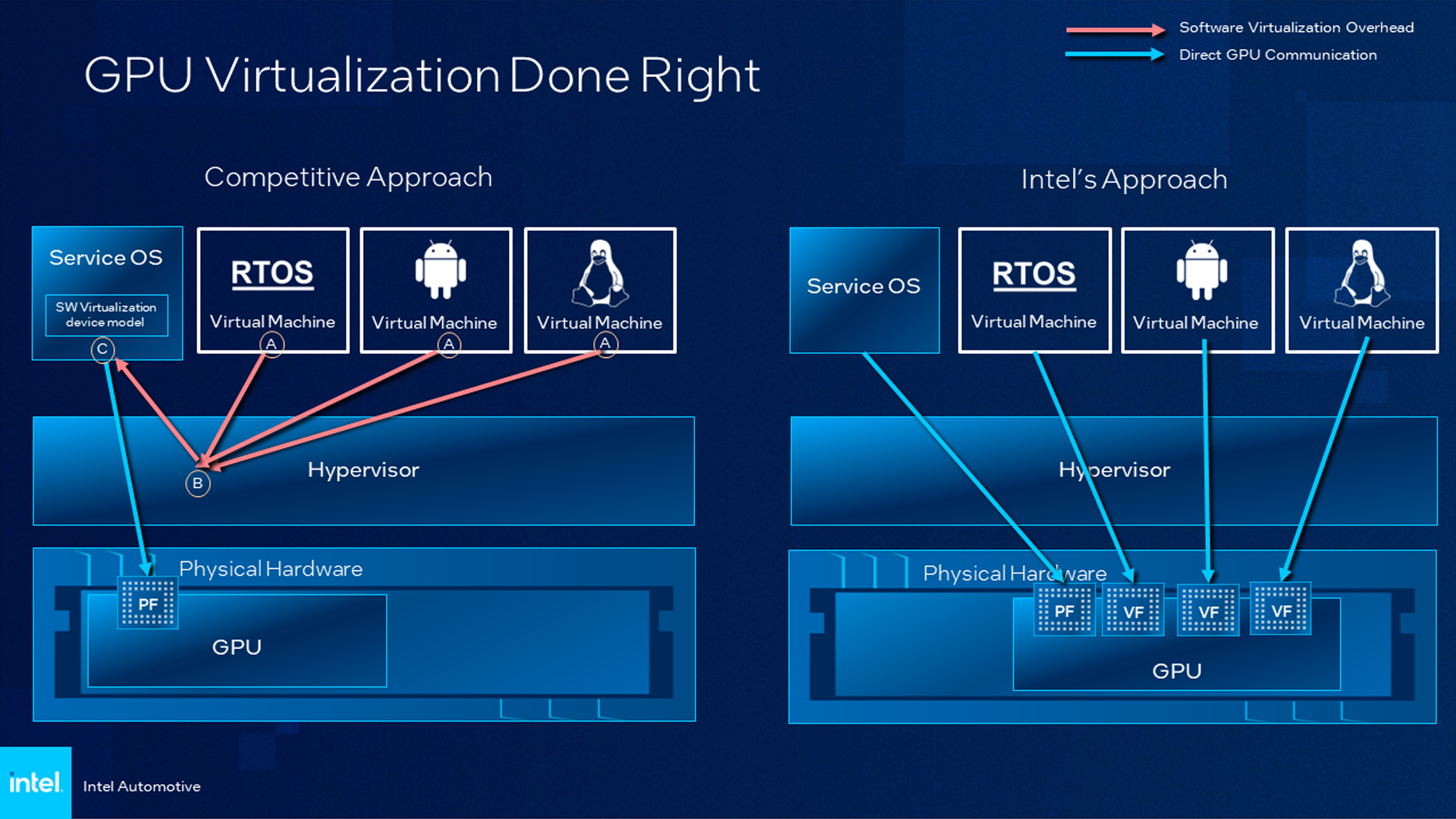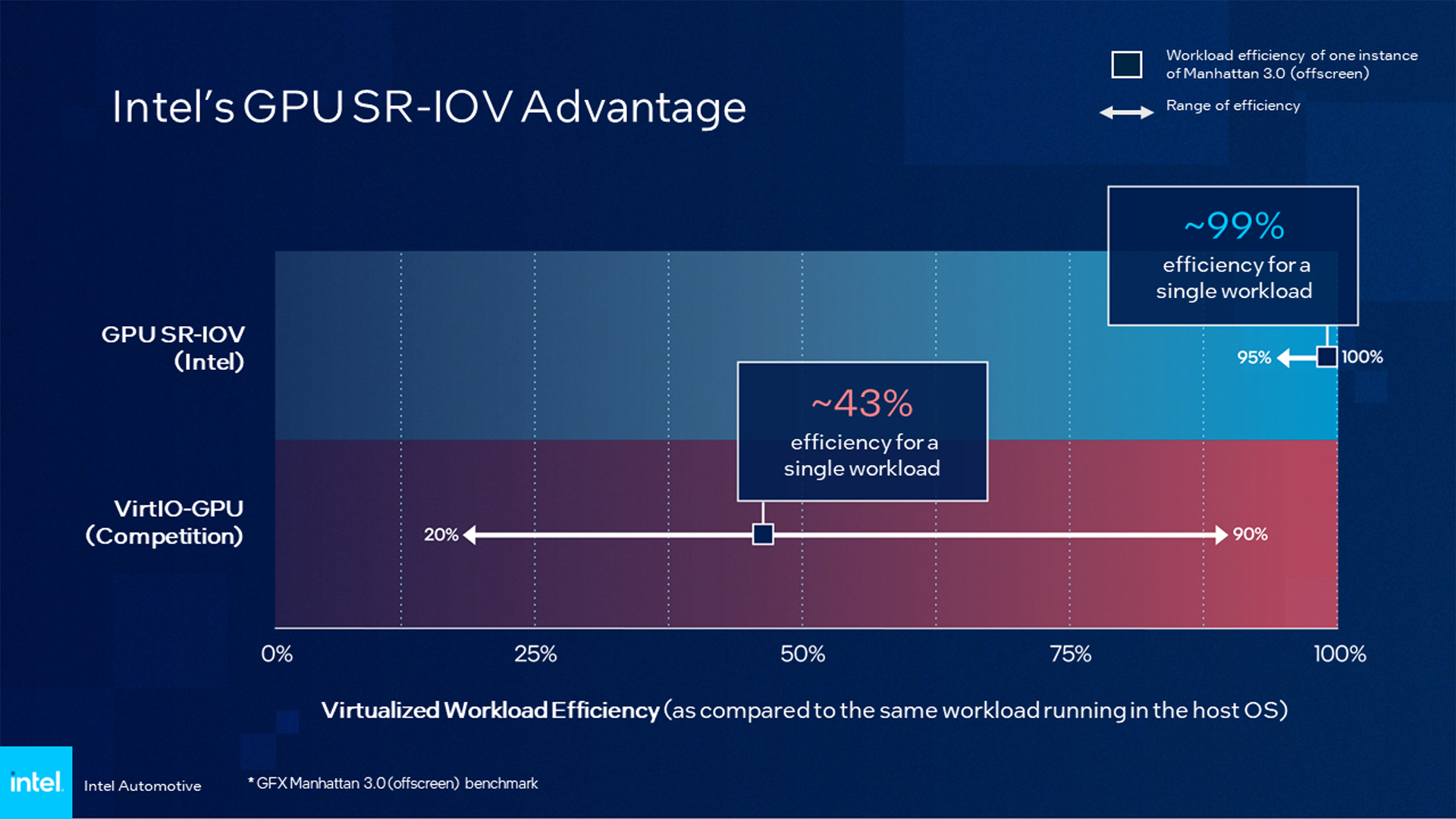
[ad_1]
Intel presents the auto {industry} silicon-enforced virtualization options to create software-defined automobiles completed proper
What’s New: Utilizing Intel’s market-leading silicon-enforced virtualization capabilities, Intel Automotive presents the {industry} probably the most performant and environment friendly method to architecting a software-defined car (SDV) – one which delivers 99% effectivity and nil latency. Shopper expectations for prime quality and customized experiences demand this performant compute platform with house for a number of software program workloads.
“We now have probably the most power- and performance-efficient implementation of virtualization options in the marketplace. With out this, automakers received’t have the ability to ship the next-gen experiences they envision, giving shoppers a poor-performing and slow-responding in-vehicle expertise.”
– Jack Weast, Intel Fellow, vice chairman and basic supervisor of Intel Automotive
Why It’s Essential: The auto {industry} has been making an attempt to maneuver towards the software-defined promise by utilizing a hypervisor for software program virtualization, making a bottleneck that can’t scale with the efficiency calls for of todays workloads. Intel’s silicon-enforced separation permits a direct path, bypassing the hypervisor, and opens up further efficiency inside the software program for increased high quality and new workloads that can unlock the next-gen options and companies shoppers crave.
How It Works: Suppose for a second of the compute wanted to energy an SDV as if it have been an electrical car (EV) with a completely charged battery. It’s typically accepted that if it leaves house (Level A) to go on to its set vacation spot (Level B), it optimizes efficiency, on this case the car’s vary. That’s how Intel’s silicon-enforced virtualization works – it makes an environment friendly journey to the {hardware}. But when the EV is pressured to make a detour to an alternate location (Level C), it should burn up important vitality, and the journey takes longer. This pressured “detour” is much like the expertise delivered by different silicon suppliers. Particularly, an excessive amount of of the virtualization performance is carried out in software program – that journey to Level C – earlier than the workload will get to the underlying {hardware}. The detour, finally, results in important efficiency degradation.
Automotive journey analogies apart, extra technical specificity across the journey reveals the advantages that Intel’s market-leading virtualization capabilities ship, on this case by means of the graphics processing unit (GPU).

A graphic reveals GPU software program virtualization capabilities that use a hypervisor in contrast with Intel’s plan for an SDV with hardware-enabled bodily separation
The graphic above reveals the completely different journey taken when virtualization should be completed in software program versus bodily separated on the silicon degree. On the left, to run a number of GPU-based workloads through a hypervisor, the digital machines should entry the hypervisor, then the service working system (OS) – which requires tons of of additional strains of code and makes use of beneficial bandwidth – earlier than it could possibly entry the GPU. Conversely, when utilizing Intel SDV SoCs with single-root I/O virtualization (SR-IOV), every workload is separated instantly on the GPU silicon degree, releasing up the software program layers for enablement of further efficiency and performance with zero latency.

A graphic compares efficiency benchmark of SR-IOV and virtual-only separation (VirtIO) utilizing GFX Manhattan 3.0 (offscreen)
The second illustration shows the effectivity advantages with Intel SDV system-on-chips (SoCs) in contrast with virtual-only separation (VirtIO). Utilizing the industry-standard graphics benchmark GFX Manhattan 3.0 (offscreen), outcomes present that when working a single workload, the Intel-based method can function at 99% effectivity in contrast with the competitors, which is working at roughly 43% effectivity. In actual phrases this implies for those who run a workload that wants 100 frames per second (FPS), with the Intel answer you get 99 FPS with zero latency. With the choice answer, you get 43 FPS, plus further workload-dependent latency. This instance merely scratches the floor of some great benefits of Intel’s market-leading virtualization capabilities. These advantages equally lengthen to AI-based workloads, and even headless workloads that don’t use a GPU or AI accelerator.
What It Means for In-Car Experiences: Virtualization is the important thing to unlocking the next-gen experiences that buyers crave. With it, drivers and passengers will expertise a way more responsive car. Suppose increased frame-rate efficiency throughout recreation play, the fantastic thing about 3D map purposes as a substitute of 2D, real-time 3D visualizations throughout a number of shows inside the car, or enhanced security with real-time AI inferencing.
All of that is coupled with the reassurance and comfort of over-the-air updates which might be able to delivering the following period of companies and options over the complete car’s lifetime.
SOURCE: Intel
[ad_2]